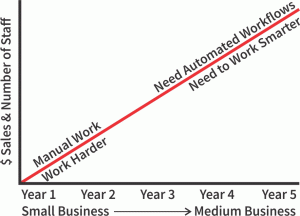
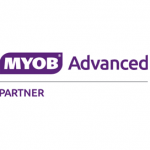
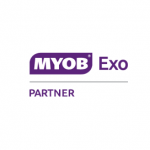
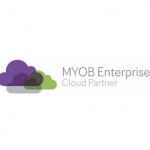

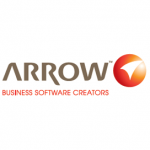
We have selected the most cost-effective business systems to suit medium-sized clients. We support a range of different business systems so that we can be sure to recommend the system that provides the best possible match to the functional requirements and strategies of your business.
We do not offer a “one size fits all” solution. The fact is that different business software and systems have different features, pros and cons. Some systems will simply be a better match to the functional requirements of your business.
For example:
- A community service, not-for-profit or semi-government organisation may need strong Activity Based Costing, Analysis, Payroll/HR and Data Integration functions;
- A wholesale organisation may need strong Supply Chain Management, Inventory, Warehouse Management, Client Relationship Management and Materials Requirement Planning functions;
- A contracting company may need strong Job Costing, Job Management and Scheduling functionality.
Every business is different. Every software package is different. We have the experience to be able to guide you towards matching your business with the system that will provide the most cost-effective solution for your organisation.
We have anticipated some of your questions and provide some explanations below. When you are ready please call us and we can have a chat regarding your requirements and developing an effective information system strategy for your business.
“Medium-sized” organisation?
We are referring to businesses that are typically within the following range
- From 10 to 1000 employees; or
- From $5m to $500m annual turnover.
These numbers are just a guide, we also support smaller and larger clients. In fact there has been a strong trend of much larger organisations (e.g. with turnover in excess of $1b and more than 1000 employees) to recognise the amazing cost-benefits available from software and systems that are designed for “medium-sized” organisations.
Investment and cost of our systems?
The investment and operating costs of your new business system will depend upon a number of factors:
- The number and complexity of functions that you want to integrate and automate;
- Network Infrastructure – do you want to operate your system on your own premises or on the cloud – private, public or hybrid cloud;
- Skills and experience of your staff and their readiness to learn new and more efficient ways to work.
We can provide you with an initial budget for both your initial investment and your ongoing operating costs.
For a small business in the early years of operation, the usual preference is to operate manual businesses. As the business grows, the business owners will work harder and longer hours to cater for the growing workload.
Eventually, if the business continues to grow, it will reach a stage where manual processes reach a breaking point of inefficiency. It is important for a business to start the process of automating and integrating systems well before this breaking point is reached.
If your business is suffering from problems of workload, inefficiency and lack of information then you may have reached the stage where it will be more economical to invest in technology, i.e. business automation and integrated workflows. Give us a call and tell us about your business. We will be able to give you an indicative budget and then you can weigh up the alternatives of working smarter or working harder.
What are Business Systems?
The traditional term used is ERP – Enterprise Resource Planning. At Communicat we typically avoid that term since it (a) tends to be understood mainly by specialists in ERP systems and (b) the term has overtones if high expense and very long periods of implementation.
We like to keep our communications simple and we use plain English terminology, such as “Business Systems”, in fact we prefer the term “Integrated Business Systems” but that is a bit of a mouthful, and the latter term would only end up being shortened to IBS which clouds the meaning again.
Therefore, we adopt the shorthand term of Business Systems.
Essentially, Business Systems are any technologies that allow your business to be more highly automated and for your team to work smarter (not harder).
Other traditional terms are “Accounting System”, “Finance System” or “Turnkey System”. None of these terms are adequate to describe the breadth of functionality available with today’s business system.
Today’s business systems are modular, including all of the software modules required to suit your business. We connect and configure the software modules to fulfil the functional requirements of your business, then provide you with implementation, training and support.
Once your software has been chosen we will then recommend the network environment that will allow you to operate your software efficiently.
What does “Integrated” mean? (in the context of Business Systems)
Does your business currently operate several standalone systems such as:
- Accounting and Finance – e.g. MYOB AccountRight, Premier, Xero etc.
- Operational Management – e.g. databases and spreadsheets
- Sales Information and Client Relationship Management – e.g. SalesForce, Microsoft Dynamics CRM
- Spreadsheets for sundry functions e.g. management and financial reporting.
We refer to these systems as “standalone systems”. Some people might claim that these functions might fit within the definition of the term “Business Systems”, however it is clear that these are standalone systems, i.e. they are not connected and therefore they do not fulfil the term “Integrated Business Systems”.
If you are operating separate standalone then you are probably handling the same information multiple times, keying data two or three times into multiple systems. This means you are wasting precious time, plus you have the problem of delays and inaccuracies between different systems.
What if you could…
- Key in your data once and your data would then flow to all connected functions and people
- All of your systems are connected online so that there are delays or inconsistencies between different systems
The problem of “dis-integrated systems” is acceptable and normal in the early years of the life of an organisation, when a business is small and the future is uncertain. During the early years these inefficiencies can be hidden by the business owners working harder and longer hours.
The problem comes later. As a business grows it becomes uneconomical to operate labour-intensive work processes. If an organisation continues to grow it will inevitably reach a critical point where it becomes necessary to automate and integrate systems, so that you can gain the efficiencies of “do it once, do it right”.
As the business grows it will eventually reach a stage when it becomes sensible to invest in technology and business automation, rather than continue to hire more employees and suffer from delays, inaccuracies and lack of information.
Has your business reached the stage where you need to have one integrated business system?
Why does Communicat support multiple business systems?
We have chosen some outstandingly cost-effective, powerful and easy-to-use business systems that we are able to recommend to our clients. Each of our systems has different functionality and therefore one of these systems will be more suitable for your business compared to the others.
We offer a range of choices of software and systems, and therefore we are able to advise you about which system will be the best suited to match the functional requirements and strategies of your business?
Services sub V03
